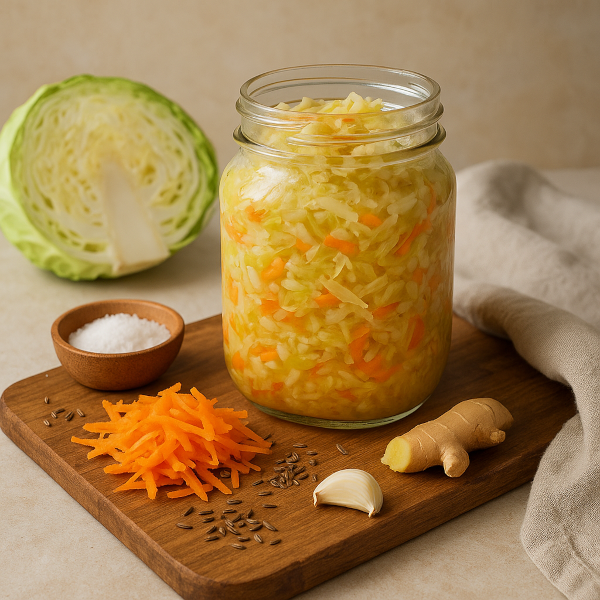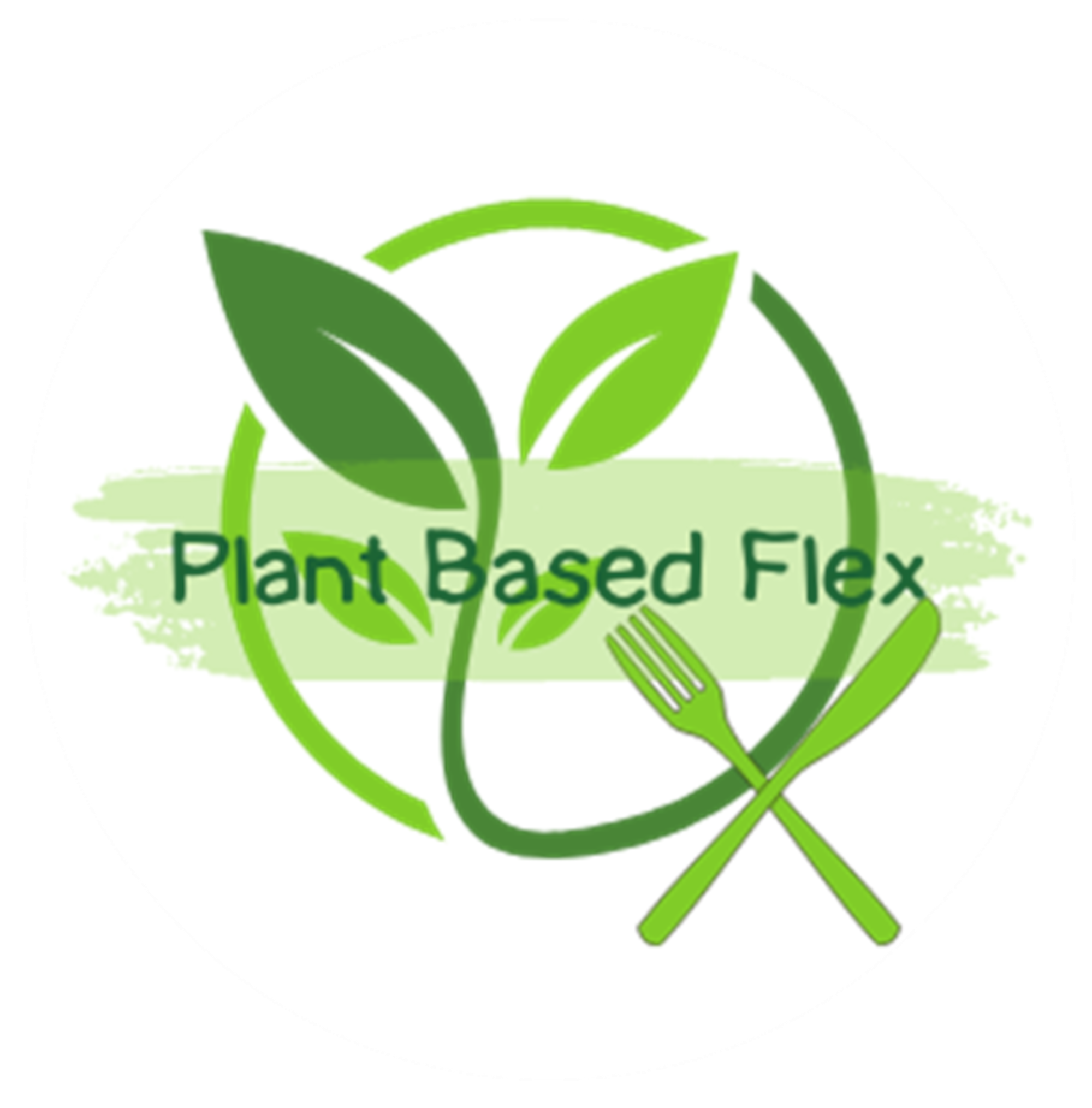Simple Cabbage Carrot Sauerkraut

Simple Cabbage Carrot Sauerkraut: Why it is good for your gut and brain
Ingredients
Fermented cabbage and carrots are a natural source of friendly lactic acid bacteria. These microbes help balance the gut, support regularity, and may increase the production of short chain fatty acids that nourish the gut lining. A happier gut often means better mood and mental clarity through the gut brain connection. Cabbage brings vitamin C and K for cell repair and bone health. Carrots add beta carotene for eye and skin health. Together they help you flex your plant power and thrive beyond 60.
Ingredients
- 1 medium green cabbage, cored and finely shredded about 2 pounds
- 2 medium carrots, peeled and grated
- 1 tablespoon plus 1 teaspoon fine sea salt
- Optional additions 1 teaspoon caraway seeds or 1 teaspoon grated fresh ginger or 1 small garlic clove, minced
Equipment
- 1 half gallon jar or two quart jars with lids
- Large bowl, a tamper or clean fist, and a small jar or fermentation weight
Steps
- Add cabbage and carrots to a large bowl. Sprinkle on the salt and any optional additions.
- Massage firmly for 5 to 10 minutes until the veggies look glossy and release plenty of brine.
- Pack the veggies tightly into the jar. Press down so the brine rises to cover the vegetables. Leave about 1 inch of headspace.
- Add a clean weight to keep everything under the brine. Wipe the rim and close the lid.
- Ferment at cool room temperature 65 to 72 F. If using a regular lid, open it once daily to release gas. Keep the veggies submerged.
- Start tasting on day 4. Most batches are ready in 5 to 10 days. Warmer rooms finish sooner.
- When it tastes pleasantly sour and still crunchy, refrigerate. It keeps for 2 to 3 months.
Troubleshooting
- Need extra brine Mix 1 cup water with 1 level teaspoon fine sea salt and add just enough to submerge.
- If you see a harmless white film on the surface, lift it off and make sure everything stays under the brine.
Ingredient benefits at a glance
- Cabbage Vitamin C for immune support and collagen. Vitamin K for bone and heart health. Prebiotic fiber for regularity.
- Carrots Beta carotene that the body converts to vitamin A. Antioxidants that support eye and skin health.
- Caraway or ginger Optional but great for digestion and bloat relief.
- Garlic Optional. Adds prebiotics and sulfur compounds that support a healthy microbiome.
Serving ideas
- Add a forkful to avocado toast, grain bowls, or bean tacos.
- Pair with eggs at breakfast. Add on the plate after cooking to keep the probiotics alive.
- Stir into a simple slaw with a little olive oil and apple cider vinegar.
- Use as a bright topper for baked salmon or veggie burgers.
- Blend a tablespoon into creamy dressings for a tangy kick.
Estimated nutrition facts
Per 1/2 cup drained serving
- Calories 10 to 20
- Protein 1 g
- Total fat 0 g
- Carbohydrates 3 g
- Fiber 2 g
- Sodium about 200 to 500 mg based on how much brine you keep and whether you rinse
Short disclaimer
Homemade ferments are generally safe when kept under brine and handled with clean tools. If you ever notice a strong off smell, visible mold that looks fuzzy, or unusual colors, discard the batch and start fresh. Nutrition values are estimates and will vary with salt level and fermentation time. If you have a medical condition or need a low sodium plan, talk with your health care professional before enjoying fermented foods.
